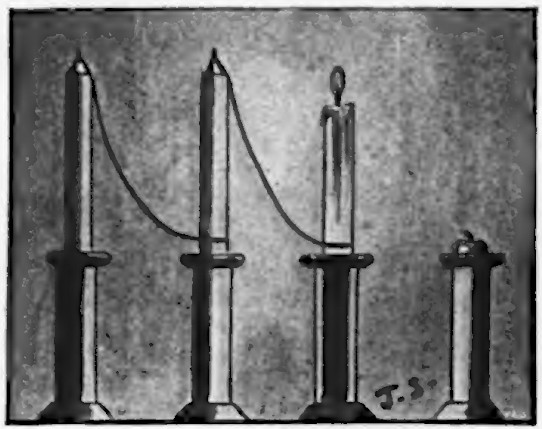
Allegedly this scheme was invented by a poet who wanted to write all night without interruption. He set up a row of candles and linked the base of each to the top of the next with a piece of twine. When the first candle burned down to the twine, “the latter naturally caught fire, and a tongue of flame would creep up to the adjoining candle, lighting it in the manner desired.”
“The scheme is a pretty example of the brilliancy of simplicity in idea, as compared with the complicated arrangements often devised to secure simple results.”
(James Scott, “Strange Devices,” Strand, August 1895, 184-189.)
